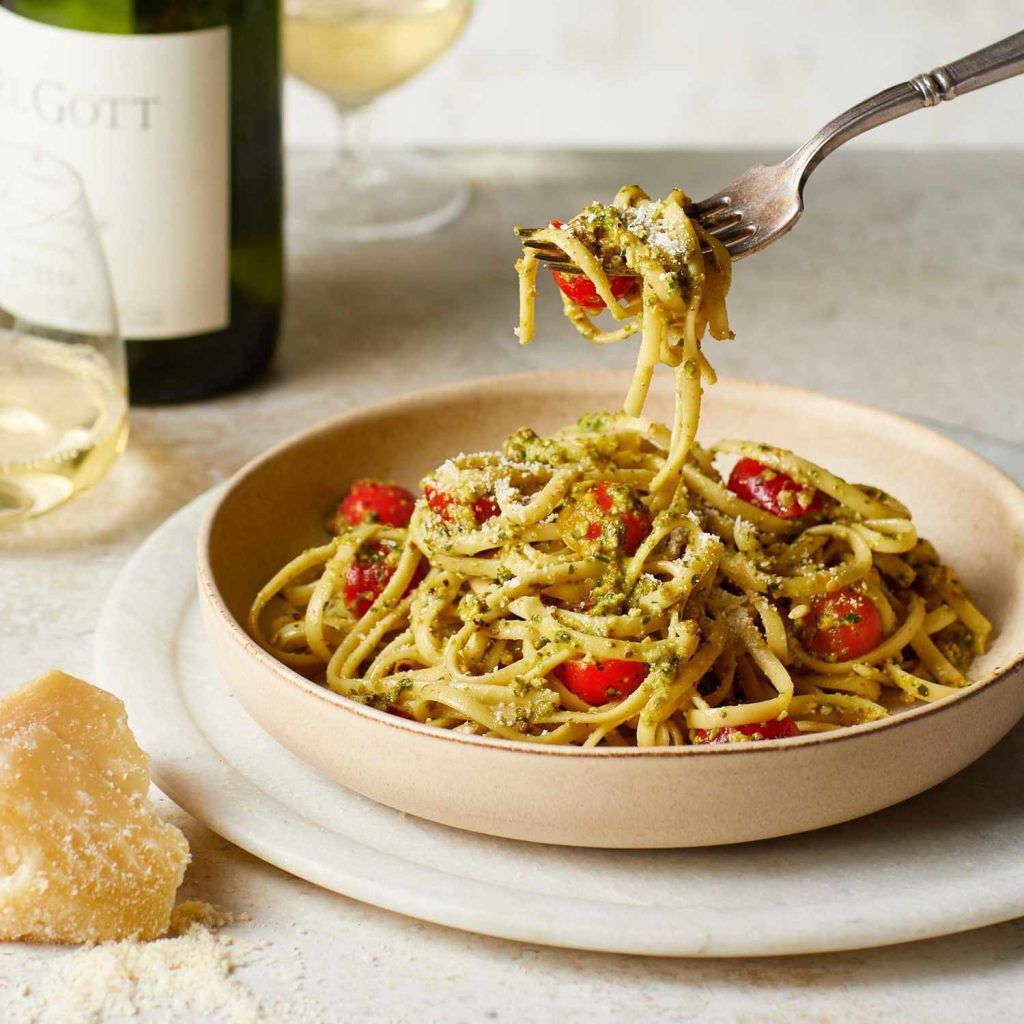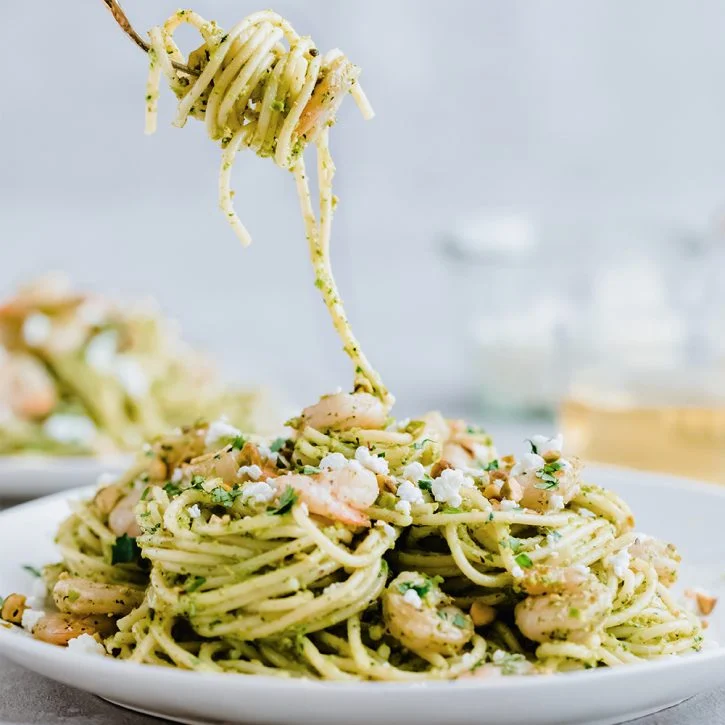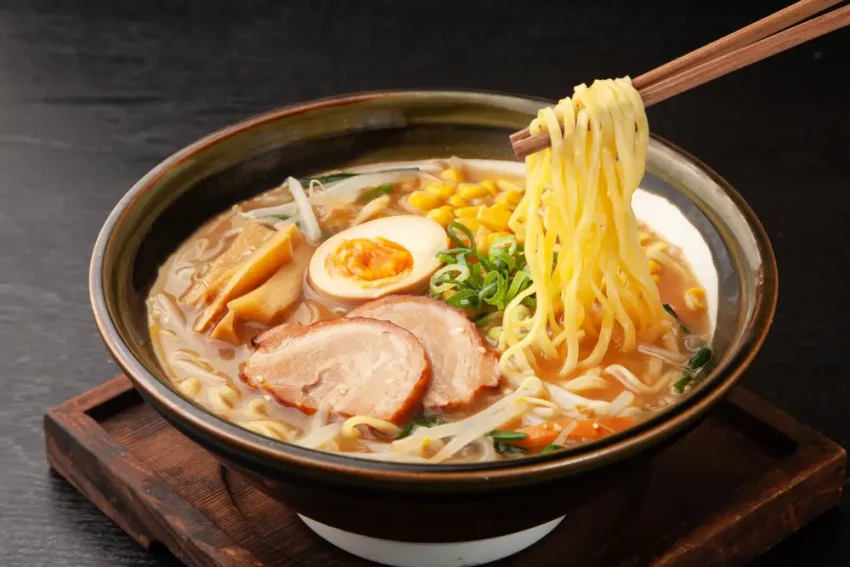One of life’s simple joys is going on a gastronomic adventure, but what happens when your mouth is itching for noodles, your favorite comfort meal, immediately following a tooth extraction? It’s a question that a lot of people ask, and you might be surprised by the response.
Yes, you can eat noodles after a tooth extraction, but certain precautions should be taken for a smooth and comfortable recovery. Opt for soft noodles that are not spicy or hot, as these are easier on the surgical site and less likely to cause discomfort.
So let’s solve the riddle of how to eat noodles after having a tooth extracted without sacrificing your comfort.
Post-Tooth Extraction Dietary Guidelines

After the wisdom teeth removal, it’s essential to maintain a diet of soft foods for the first few days to ensure comfort and promote healing. Opt for gentle options like mashed potatoes, yogurt, applesauce, or well-cooked pasta and noodles. Avoid hard, crunchy, and chewy foods, as these may disrupt the healing process.
Additionally, steer clear of spicy and acidic foods, which can irritate the surgical area. Be mindful of extreme temperatures and refrain from very hot or cold foods. When eating, chew on the opposite side of the extraction site to minimize pressure. Say no to straws, as they can dislodge blood clots crucial for healing.
However, staying hydrated is vital; choose soft, nutrient-rich foods like smoothies and incorporate soft protein sources. Follow prescribed medications and limit sugary items to support a smooth recovery.
In the end, follow the individual instructions that your oral surgeon or dentist has given you, which are based on your unique situation and the difficulty of the extraction.
Why Noodles Are a Beneficial Choice?
Ease of Preparation: During the initial days of recovery, when you may be in pain and experiencing the effects of painkillers, the prospect of elaborate cooking is often unappealing. Instant noodles, a type of soup, provide a convenient solution. It allows you to nourish your body without investing extensive time and effort in cooking, especially after the discomfort of wisdom tooth extraction.
Cost-Effective: Post-procedure, you might find yourself less inclined to cook and more inclined to order delivery or take-out, which can add up. Having a supply of noodles on hand offers an economical alternative. It’s a budget-friendly choice that doesn’t demand significant effort.
Versatility: Recovery diets following dental procedures can be somewhat monotonous, often limited to soups and soft foods. However, it offers variety with its diverse flavors and the option to personalize them with additional ingredients and toppings. When adding extras, remember to choose soft items that won’t get stuck in the extraction area to prevent complications like dry socket.
Drawbacks of Eating Noodles
- Texture-Related Discomfort
- Spice and Seasoning Challenges
- High Sodium Intake and Swelling
- Risk of Dry Socket Development
- Importance of Opting for Gentle, Healing Foods
Process Of Making Noddles:
- Choose soft noodles like ramen or pasta.
- Let them cool down a bit to avoid irritation.
- Cut the noodles into small pieces for easier eating.
- Use mild sauces or broths, nothing too spicy.
- Take small bites and chew on the opposite side.
- Sip noodle soup gently, with no vigorous slurping.
- Rinse your mouth with warm saltwater after
- Sit or stand up straight while eating to avoid discomfort.
Nutritional Value of Noodles
| Nutritional Component | Amount per Serving of Wheat Noodles |
| Calories | Approximately 221 calories |
| Carbohydrates | Approximately 43 grams |
| Protein | Approximately 7 grams |
| Fat | Less than 1 gram |
| Dietary Fiber | Approximately 2 grams |
| Vitamins and Minerals | Small amounts of B vitamins, iron, magnesium, phosphorus |
| Sodium Content | 1,000-2,000 mg (high) |
| Other Nutrients | Depending on type (e.g., whole wheat noodles may provide more fiber and nutrients) |
Post-Extraction Dietary Guidelines: Foods You Can Eat 24-48 Hours After Removal
| Days | Recommended Foods |
| Days 1 and 2 | Nutrient-rich liquids and soft foods like smoothies, milkshakes, blended soups, Greek yogurt, and applesauce. Consider mildly cold options for pain relief. |
| Days 3 and 4 | Semi-soft foods that don’t require extensive chewing, such as scrambled eggs, cottage cheese, instant oatmeal, sandwiches, and soft noodles. Continue to avoid hard or crunchy foods. Transition to solid foods only when you experience reduced pain and discomfort further into the healing process. |
Soft Foods After Wisdom Teeth Removal:
| PancakesMashed potatoesCakeEggsPastaPopsiclesMeatloafRamen noodlesMac and cheeseAvocadoBeansOatmealSmoothies | SquashSliced and cut fish or meatsSweet potatoesSoft sandwichesSoft riceSteamed veggiesSour creamSouffléSherbetSoft breadSoft cheeseRisottoYogurtMashed fruits |
Foods to Avoid After Wisdom Teeth Removal
Acidic and Spicy Foods: Refrain from indulging in acidic foods like citrus fruits and spicy dishes, such as those with hot salsa or an abundance of cinnamon. These can incite irritation in your healing gums, prolonging the recovery process.
Tiny Grains and Seeds: Avoiding small grains and seeds, such as those in bread or other cereals, is advised. They tend to get stuck in the surgical areas, which could make the healing process more difficult.
Chewy Delights: Stay away from chewy foods, including candies and chocolates. These treats pose a risk of accidentally biting your cheeks, lips, or tongue, especially when your mouth remains numb immediately following oral surgery.
Crunchy Culprits: Foods that have a crunch, like chips and carrots, are best avoided. They could get stuck in the surgery site and interfere with the vital healing process.
Ensuring Optimal Oral Care Following Wisdom Teeth Removal
Here are several key considerations to bear in mind:
Mindful Chewing: Whenever possible, opt for chewing on the side opposite to where your wisdom tooth was extracted. If it were removed from both sides, proceed to chew with extreme care and at a slower pace while adhering to your prescribed diet. This approach minimizes contact that may help to discomfort, pain, or bleeding.
Gentle Dental Hygiene: While it’s imperative to continue brushing your teeth, it’s equally essential to do so with a gentle touch. Avoid any contact with the extraction area to prevent further injury, including the risk of dry sockets.
Smoking Cessation: It’s highly advisable to refrain from smoking. Because it can interfere with your pain medication and may lead to bleeding gums, also impeding your recovery. Typically, it’s recommended to abstain from it for at least seven days, but always consult with your healthcare provider before resuming this habit.
Limited Intense Exercise: Consider taking a brief hiatus from rigorous exercise regimens, as such activities can inadvertently agitate your mouth, potentially causing increased swelling around the surgical site. Allow yourself at least a week off from intense exercise and consider engaging in leisurely activities like casual walks and gentle stretches instead.
Removing Noodles from Wisdom Teeth Holes: A Guided Approach

When faced with the challenge of removing noodles or any food particles lodged in wisdom teeth holes, a syringe can be a helpful tool. To maintain oral hygiene and cleanliness, patients are advised to rinse their mouths, paying close attention to the extraction area, with a gentle saltwater solution.
This practice should commence 24 hours after the extraction and continue post-meals, ideally five to six times a day.
However, when food becomes trapped in the extraction site, there are vital considerations before attempting removal.
1. Stay Calm: It’s essential not to panic when you realize there’s food stuck in your wisdom tooth hole. The discomfort and unusual sensations can lead to hasty decisions. Moreover, distinguishing between food and blood clots can be challenging, as blood clots can resemble food particles.
Further, Erroneously removing a blood clot can hinder the healing process and intensify pain. If you’re uncertain about the nature of the material in the hole, it’s prudent to leave it undisturbed.
2. Allow Natural Healing: Leaving food in the wisdom tooth hole won’t incite damage or infection. The area will continue its natural healing process, and over time, the food will naturally dislodge, or your body will manage its removal.
3. Safely Using a Syringe: If you decide to remove the food from the hole, start by gently rinsing the area with a saltwater solution. If this initial rinse proves ineffective, you can proceed with a syringe:
- Fill the syringe with either the saltwater solution or lukewarm water.
- Position the syringe near the affected area without direct contact.
- Carefully flush the area with the syringe, approaching from various angles to dislodge the trapped food particles.
- Exercise caution and avoid forceful pushing to prevent the accidental removal of a blood clot, which could disrupt the healing process.
FAQs
Which soft fruits are recommended after wisdom teeth removal?
You can enjoy stewed fruits like plums, pears, and apples, but watch out for high sugar content. Soft or mashed bananas, even frozen and mashed for a healthier ice cream alternative, are great. Steer clear of sugary canned fruits. Pureed, seedless berries in milkshakes work well, but avoid fruits with seeds like strawberries and raspberries. Soft avocados, like guacamole, are potassium-rich and can speed up your recovery.
Can I Eat Ramen Noodles After Wisdom Teeth Removal?
Yes, you can eat ramen noodles after wisdom teeth removal, but with specific conditions. Make the noodles soft and not spicy, avoid hot or icy temperatures, and do not slurp them. Soft noodles with broth are recommended for the initial days of recovery.
How Long After Wisdom Teeth Removal Can I Eat Noodles?
You can eat noodles as early as two days after wisdom teeth removal. However, healing times vary, and it depends on your comfort level. Some may need more time, while others can start earlier. It’s essential to listen to your body.
Can I Eat Soup With Noodles After Wisdom Teeth Removal?
Yes, you can eat soup with noodles after wisdom teeth removal. Soft noodles and soups are recommended during the recovery period as they require minimal chewing and help ease pain in the extraction area. Avoid spicy and hot noodles.
Can You Slurp Noodles After Wisdom Teeth Removal?
No, Slurping noodles is generally not recommended after wisdom teeth removal. Suction or slurping can disrupt the healing process and cause discomfort. Choose soft noodles and chew carefully during recovery.
Can I Eat Spicy Noodles After Wisdom Teeth Removal?
No, It is not recommended to eat spicy noodles after wisdom teeth removal. Spicy foods can cause discomfort and irritation in the mouth, which may hinder the healing process. Opt for soft, nutrient-rich foods during recovery.
Can I Eat Soggy Ramen After Wisdom Teeth Removal?
Yes, Soggy ramen noodles are a softer option and may be better after wisdom teeth removal. However, it’s crucial to exercise caution and chew carefully. Consider the seasoning and spice levels to avoid irritation.
How Long After Wisdom Teeth Removal Before I Can Resume Normal Eating?
The time to return to normal eating habits after wisdom teeth removal varies, typically taking two to eight weeks, depending on the complexity of the extraction. It’s crucial to be patient and ease back into your regular diet gradually.
Final Words
To sum up, the ability to eat noodles after a tooth extraction, such as wisdom teeth removal, depends on several factors. While it is generally possible to enjoy noodles, a few considerations are essential.
Firstly, opt for soft, not spicy, and lukewarm noodles to minimize discomfort and irritation to the surgical site. The timing varies from person to person, influenced by factors like the complexity of the extraction and individual healing rates.
Additionally, it’s crucial to follow post-op dietary guidelines, such as avoiding hard or chewy foods, spicy or acidic ingredients, and extreme temperatures. Moreover, gentle chewing, hydration, nutrient-rich foods, and adherence to prescribed medications are key aspects of a successful recovery. Always prioritize the professional advice provided by your dentist or oral surgeon, tailored to your specific circumstances, to ensure a smooth healing process.

